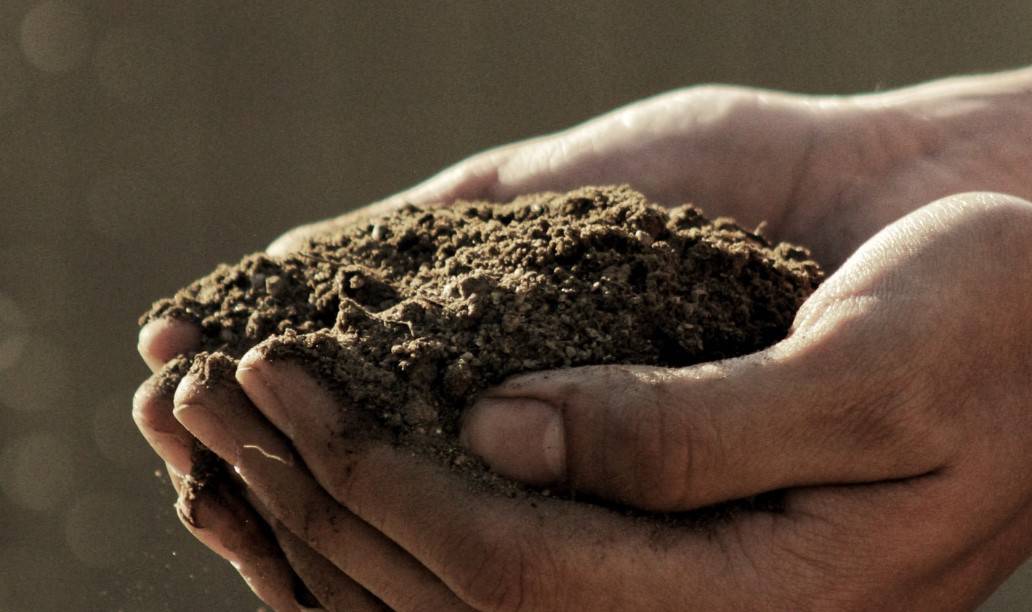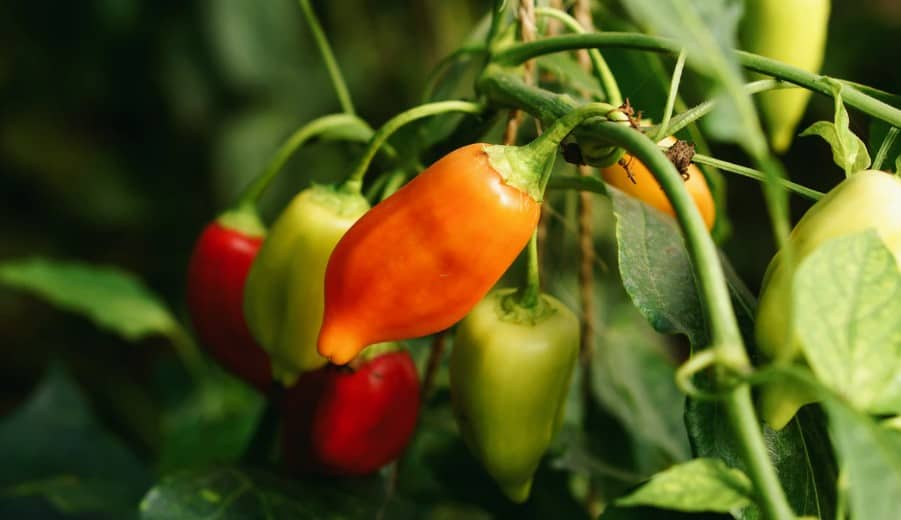Bell peppers are favorable to warmth and can be grown in the garden or containers. Some of the best varieties grown in pots are sweet bell and Jalapeno Hot. Boxes help the plant roots to get warmth during the cold season. It’s also easy to move the plant when the conditions are harsh, like strong winds, to a sheltered place. Growing pepper in pots is a great idea. In this article, you will learn how to nurture your crop from planting to harvesting.
The following are the guidelines for growing bell pepper in containers:
Choosing the Right Container
Bell plant requires a container of at least 10-12 inches deep and wide. The pot should have holes at the bottom to allow drainage of excess water. Please don’t use a black container in tropical areas as they will absorb more heat, which will damage the roots.

Soil Preparation
Bell requires warm soils of 65 degrees F. The soil should be rich in organic matter, retain moisture, be well-drained, and having potting mixes of 5.5-6.8 PH. The pot mixes should contain the following materials:
- Sphagnum peat moss- holds moisture and releases it slowly to the roots to ensure a continuous supply.
- Pine bark- improves soil circulation and moisture retention.
- Vermiculite/ perlite- improves soil aeration.
Its also advisable to add compost manure to increase nutrients to the soil, and 5-10 grams of neem cake to fight soil-borne diseases.
How to Propagate
Consider planting a bell variety that will give you good yields like a sweet bell. You can plant a seedling, seeds, or a clone. To prepare a nursery, use quality seed mix and plant seeds ½ inch below the soil surface, with two seeds per tray. Planting seeds at such a depth ensures they will quickly sprout before their food reserve is over.
You can place the seeds indoors and provide requirements like warmth and light for them to germinate, especially during cold weather or use a greenhouse. At 2-3 weeks, the plants will sprout, allow them to attain 2-3 real leaves before transplanting into a larger container.
Transplanting
Before transplanting, harden your plants for ten days to make them hardy. Transfer your plants into the new containers and plant around 2-3 peppers in one pot, depending on their size.
Proper placement
The plants enjoy warm sunny spots that receive enough sunlight. They should have 6 hours full of sunshine per day and shelter from strong winds. The plants cannot do well indoors since they require direct sunlight for optimum production, and therefore you should place your plant at an area with sunlight. The pot should be large enough to accommodate the growing plants and encourage root development.
Bell Pepper Care
Watering
This plant requires regular watering to keep the soil moist. Ensure you focus at the base when watering because wetting the leaves or overhead irrigation can cause fungal diseases. You should not flood the plant.
Temperature
Pepper requires a soil temperature of 60 degrees F and above with 68 been optimum., while ideal growing temperature should be between 70-90 degrees F.
Mulching
It helps prevent excess loss of water from the soil and acts as a source of organic matter when the materials decompose. Some of the materials you can use are straws, pine barks, and more. If you don’t have the natural materials, use inorganic mulch.
Fertilizer Application
Apply fertilizer every 15 days to supply them with the nutrients required for growth. They need fertilizer for flowering and growth of fruits. Apply compost manure monthly to add extra nutrients. Epsom salt is necessary too to improve plant health and yields, use 2tea spoonful per gallon of water.
Pinching and Pruning
Pinching out tips of the growing plant helps it to branch more and, in turn, will increase yields. Also, pruning can be done on sick parts and broken too.
Deadheading
You do it on a pepper plant that flowers too early. Deadheading helps the plant to utilize nutrients properly by first growing healthy than flowering at the wrong time. Pinching out emerging flowers can help quicken the maturity of fruits.
Pollination
Pepper does self-pollination, but you can improve it by shaking the plant during the bloom period.
Providing Support
The plant needs support when fruiting. You can poke a stick on the main stem and tie the plant to it or use a tomato cage.
Pests and Diseases Control
Be on the lookout for pests like aphids, which are very common and cause various diseases, also the bottom end rot diseases caused by calcium deficiency. Apply a root shield to the plants as you water, which protects them from fungal infections like Pythium, fusarium.
Do Peppers Need Cages?
Pepper needs cages for extra support. These plants can grow tall in some areas, and after fruiting, they tend to bend due to the weight of fruits. In areas prone to strong winds, they destroy the plants if not well caged. Some varieties also produce many fruits, and this requires extra support. If the stems bend and the fruits touch the ground, they can easily contract diseases from the soil.
Check this too: Why Aren’t My Roses Blooming?
How to Make Peppers Grow Faster?
- Grow early-season peppers like sweet chocolate pepper, Fushimi
- Start growing your seeds early enough in a well-regulated indoor area, before temperatures become favorable outside for transplanting.
- Use of waterfalls/ greenhouses/ hoop houses. They help overcome spring hailstones, keep the plant warm during the cold weather, and grow faster.
- Use of compost manure from kitchen waste, grass, leaves will help increase nutrients for plants uptake. This organic matter will also increase microbial activity in the soil, which improves soil fertility.
- Lastly, planting an already grown plant can quicken the pepper’s growth rate instead of setting a nursery, which will take some time.
The Best Fertilizer for Bell Peppers
Use of complete compound fertilizer such as 5-10-10, which contains 5% nitrogen, 10% potassium, and 10% phosphorus. A higher amount of potassium and phosphate helps the plant in fruit production while low nitrogen in growth rate not at the expense of fruit production.
Soluble fertilizers are also the best as the plant roots readily absorb them, unlike granular, which takes time before dissolving.

Harvesting Bell Peppers
Harvesting time varies in different pepper varieties; for instance, the green takes around 75days to grow to maturity. Therefore, you should harvest the green pepper when it has attained its full size with thick flesh and not allow it to turn a yellow or red color.
The longer the bell stays on the plant, the more it becomes nutritious with a high amount of vitamin C. While harvesting, be careful to the other growing fruits not to topple or cause injury to them. Use a sharp knife or scissors to cut bells from the plant. Wipe any excess dirt with a dry piece of cloth and store your fruits.
Conclusion
Peppers are a great source of vitamin c. They should be well taken care of by providing the required nutrients because they are heavy feeders, controlling pests and diseases, frequent watering, and giving proper conditions like sunlight. These management practices will improve your productivity and result in good quality and fresh peppers.
